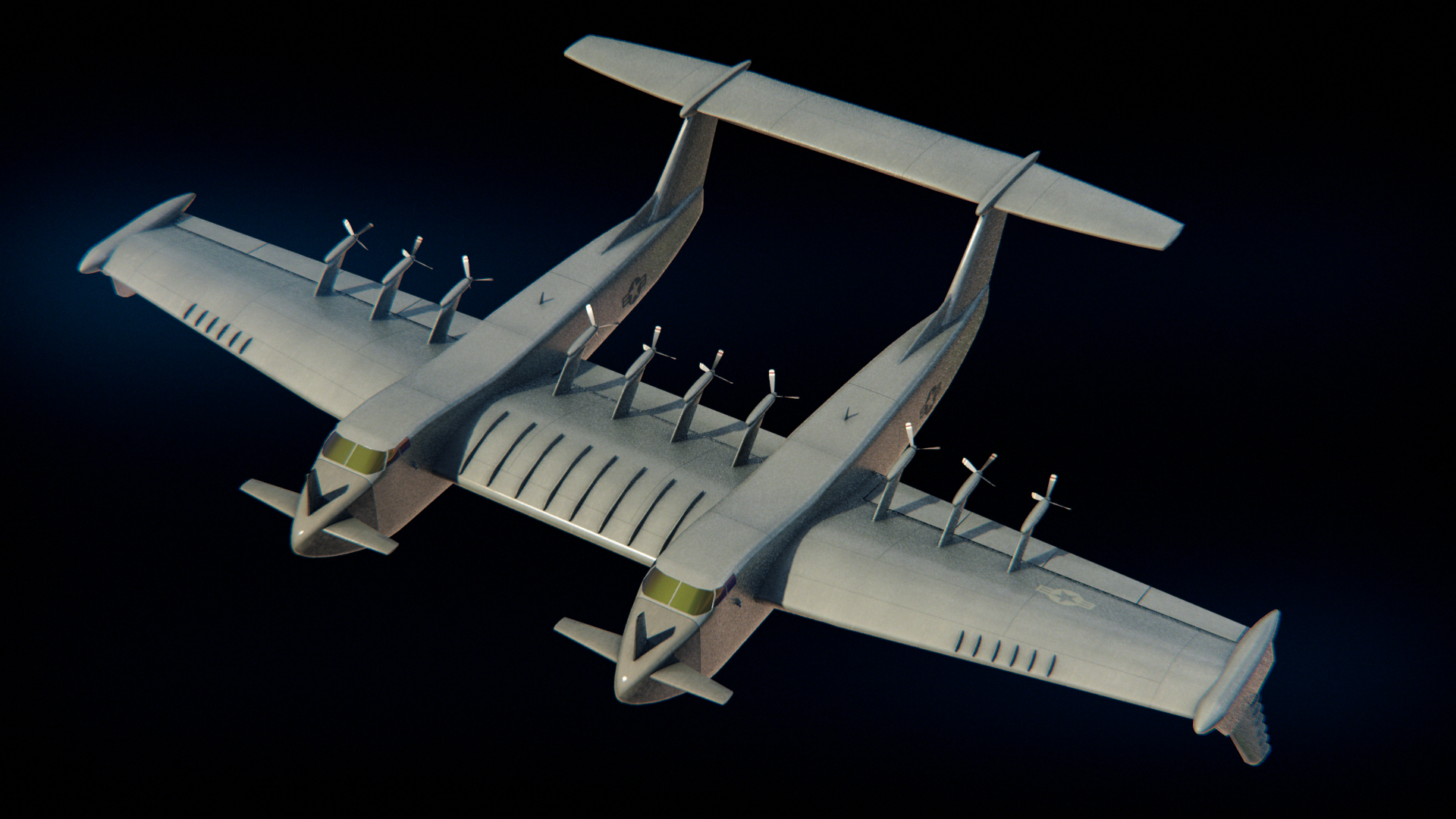
Concept art of DARPA’s future Liberty Lifter vehicle. (Image provided by DARPA.)
Updated 12/1/2022 at 1:27 pm ET with comment from DARPA.
WASHINGTON — One of the Pentagon’s key research and development agencies has tapped General Atomics ASI to work on its “Liberty Lifter” program, a relatively new initiative aimed at transforming the military’s airlift and sealift capabilities.
The contract from the Defense Advanced Research Projects Agency is worth $8 million, according to the Pentagon’s daily contract announcement for Nov. 25. The Pentagon statement did not elaborate on the type of work included in the contract, but said $6.2 million of the award would come from “fiscal 2022 research and development funds.”
On Thursday, a DARPA spokesman confirmed the contract is for conceptual design work related to the program. A General Atomics ASI spokesman declined to comment.
The Liberty Lifter program, announced earlier this year, aims to design a “long-range, low-cost X-plane capable of seaborne strategic and tactical lift,” DARPA said at the time. It’s envisioned to be similar in size to a C-17 Globemaster, weighing between 500,000 and 600,000 pounds, and cost roughly $340 million per plane.
Alexander Walan, a DARPA official overseeing the program, told Breaking Defense in an interview in May that a concept known as the “wing-in-ground” effect is critical to its design.
“If you’ve ever been on an airliner or watched a 737 land, sometimes they come in close, and then they almost kind of like go to a hover,” he said. During those moments of low altitude updraft, the aircraft experiences less drag and can more easily maintain its remaining altitude — a phenomenon DARPA hopes to stretch for long distances. “For very long-range operations, a few percentage points [of increased lift and reduced drag] actually start really adding up” in terms of fuel efficiency.
For the Pentagon’s purposes, DARPA thinks this physics trick could result in an aircraft capable of operating more efficiently than traditional cargo planes while traveling overseas as well as being able to land in large bodies of water rather than established runways.
There are a variety of challenges in pulling off the Liberty Lifter concept, however. For example, rough waves could result in turbulence on the plane, which would eat into any fuel efficiencies being gained through the “wing-in-ground” effect.
Although the WIG concept has been known for some time, it has proven difficult to master. The Soviet Union made multiple attempts at such a craft, but largely came up short of designing a vehicle ready for mass production.
“The Soviets really showed how not to do this, like a lot of things, right?” Walan told Breaking Defense.
One of those mistakes was the fact the Soviets designed a plane only capable of flying using the “wing-in-ground” effect. Walan said DARPA would not make the same mistake and envisions Liberty Lifter as capable of flying at traditional altitudes when necessary.
Navy jet trainer fleet operations remain paused after engine mishap
One week after the incident, a Navy spokesperson says the service is continuing to assess the fleet’s ability to safely resume flight.


























